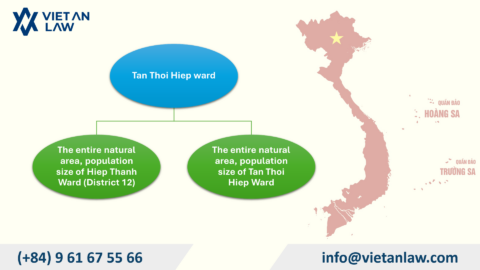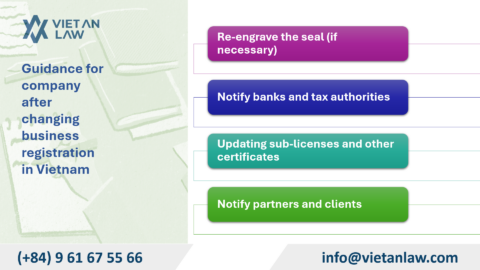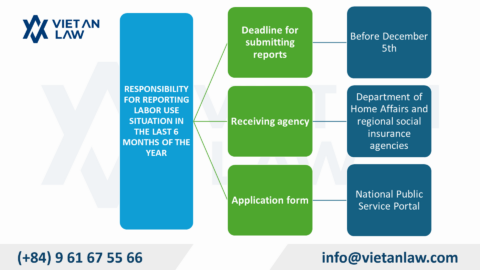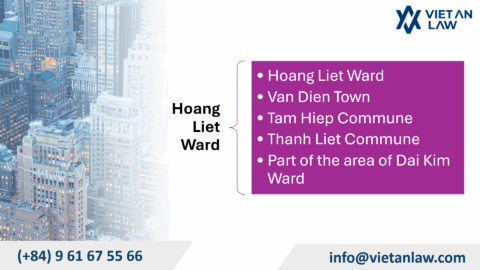In today’s increasingly competitive commercial environment, protecting intellectual property rights, especially trademarks, is more important than ever. One of the common legal issues related to trademarks is determining whether a sign is similar to a previously registered trademark. Through the article below, Viet An Law will provide you with regulations about similar signs leading to confused trademarks in Vietnam.
Table of contents
A sign that is not an associated trademark that is identical or confusingly similar to a registered trademark for identical or similar goods or services based on an application with an earlier filing date or priority date in the case where the application enjoys priority, including a trademark application filed under an international treaty to which the Socialist Republic of Vietnam is a member.
Pursuant to Articles 73, 74, 78, 90, 163, 213 of the Law on Intellectual Property 2005, as amended and supplemented in 2022, signs identical or confusingly similar to another person’s trademark have been widely used and recognized for identical or similar goods and services:
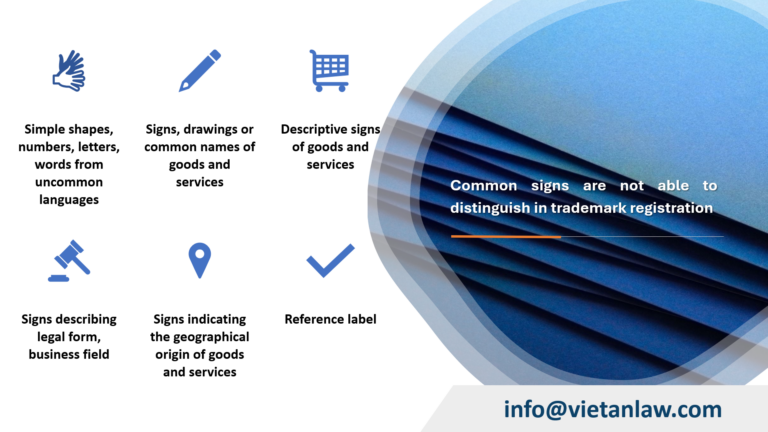
Signs considered identical or similar are one of the cases under Article 74 – signs that are not capable of being distinguished when registering a trademark, specifically as follows:
Thus, if a newly registered trademark does not have the above signs, there is a high possibility that protection will be refused or the application will have to be separated and the protected signs in the application will have to be amended.
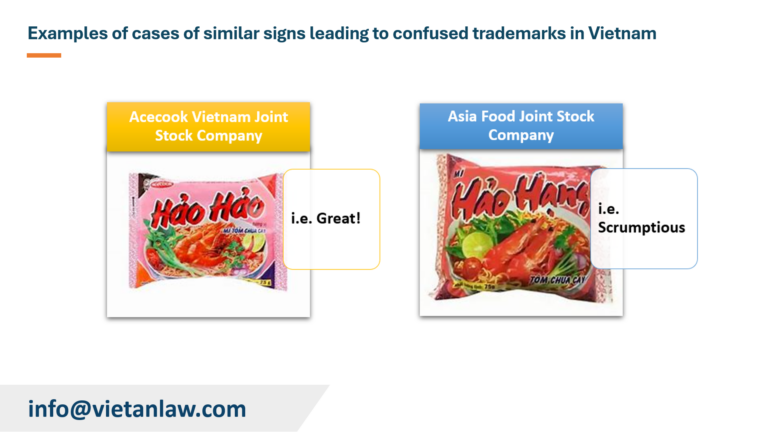
The trademark “Hao Hao” is protected under the Certificate of Trademark Registration No. 62360 issued on April 29, 2005. The trademark “Hao Hang” is protected under the Certificate of Trademark Registration No. 119302 issued on February 11, 2009. These two trademarks have signs that can easily confuse consumers and make it impossible to distinguish, specifically as follows:
Both trademarks represent the same type of goods, instant noodles (same group 30). “Hao Hang” has 8 characters, of which 5 are duplicated, and the pronunciation is also similar, the first sound is “Hao” so it is easy to confuse with the trademark “Hao Hao”.
The trademark “Hao Hang” has a similar font (red, tilted to the right), the image of a bowl of noodles, noodles, shrimp, lemon, chili, herbs, etc. with the main color (pink-red) of the packaging design, creating a similar whole, causing confusion for consumers, making it impossible to distinguish.
In addition, the trademark “Hao Hao” was granted a protection certificate before. Thus, the original trademark is “Hao Hao” and of course, the infringing trademark is “Hao Hang”. Asia Food Company has infringed on Vina Acecook’s trademark and must be subject to administrative sanctions and compensate Vina Acecook for damages.
Trademark owners can choose from a variety of measures to protect their intellectual property rights, such as:
The current intellectual property law does not have specific mechanisms to protect industrial property rights (trademarks) in this case, because it is an intangible asset and is easily infringed by other entities. The only way to protect your trademark from infringement is to quickly register for trademark protection at the competent state agency (Intellectual Property Office).
In case of registration for protection but not yet granted a certificate, during this time, the owner needs to collect relevant information such as evidence proving that the trademark belongs to him/her (time of creation, time of putting into operation, many people know that trademark, etc.); collect evidence proving that his/her trademark has been infringed;… After being granted a certificate of protection, the owner quickly files a lawsuit in Court to protect his/her rights.
Note: When the owner does not have a trademark protection certificate, the infringer has obtained a trademark protection certificate. In this case, the owner must accept that his trademark has been infringed without a mechanism to handle it properly because according to the current Intellectual Property Law, trademarks are protected according to the first-to-file principle: “A certificate of protection can only be granted to a valid application with the earliest priority date or filing date among the applications that meet the conditions for being granted a certificate of protection”.
Above is the advice of Viet An Law on similar signs leading to confused trademarks in Vietnam. If there are any other legal problems related to intellectual property rights, please contact Viet An Law for more specific and detailed advice. Sincerely thank you!
